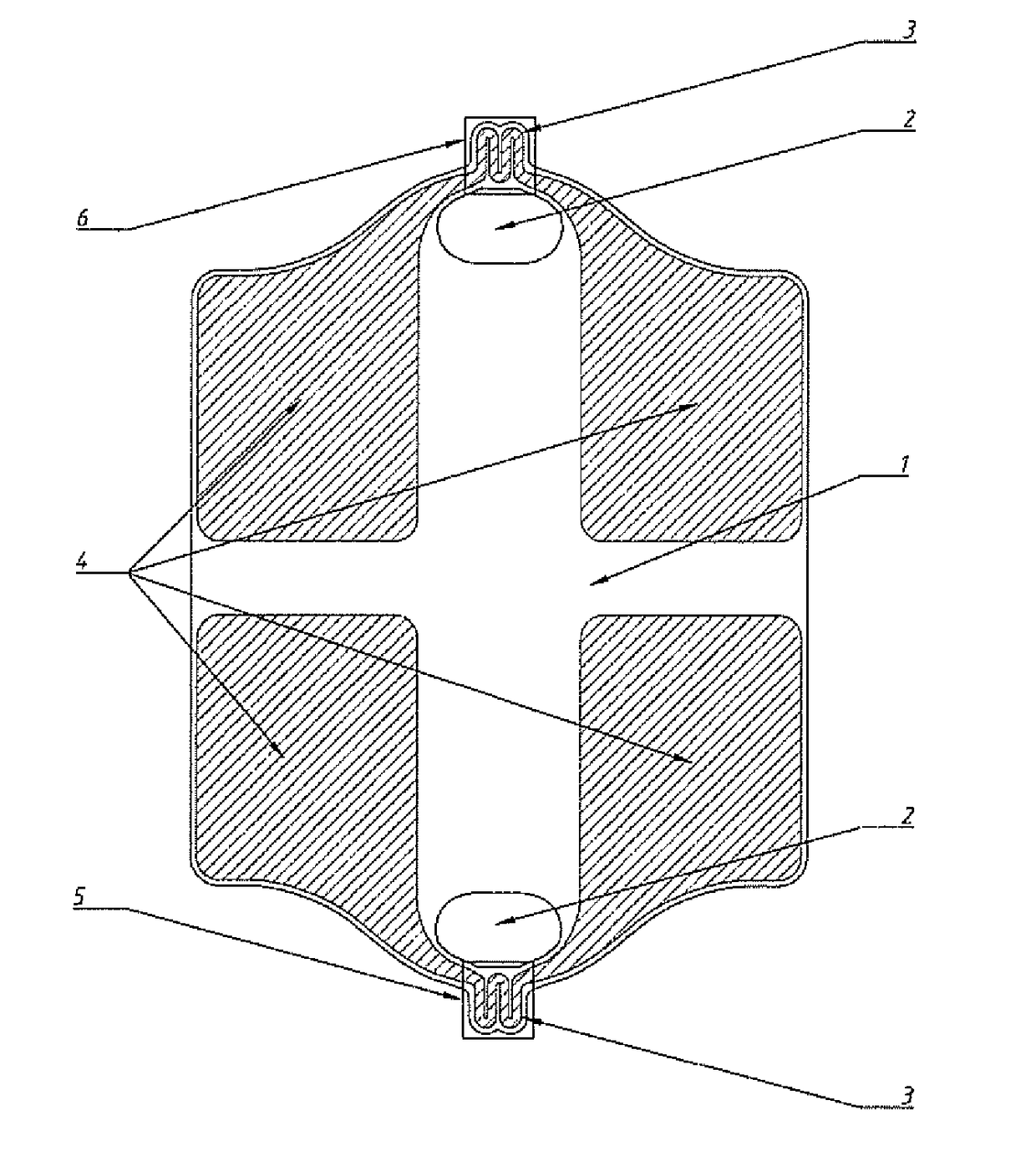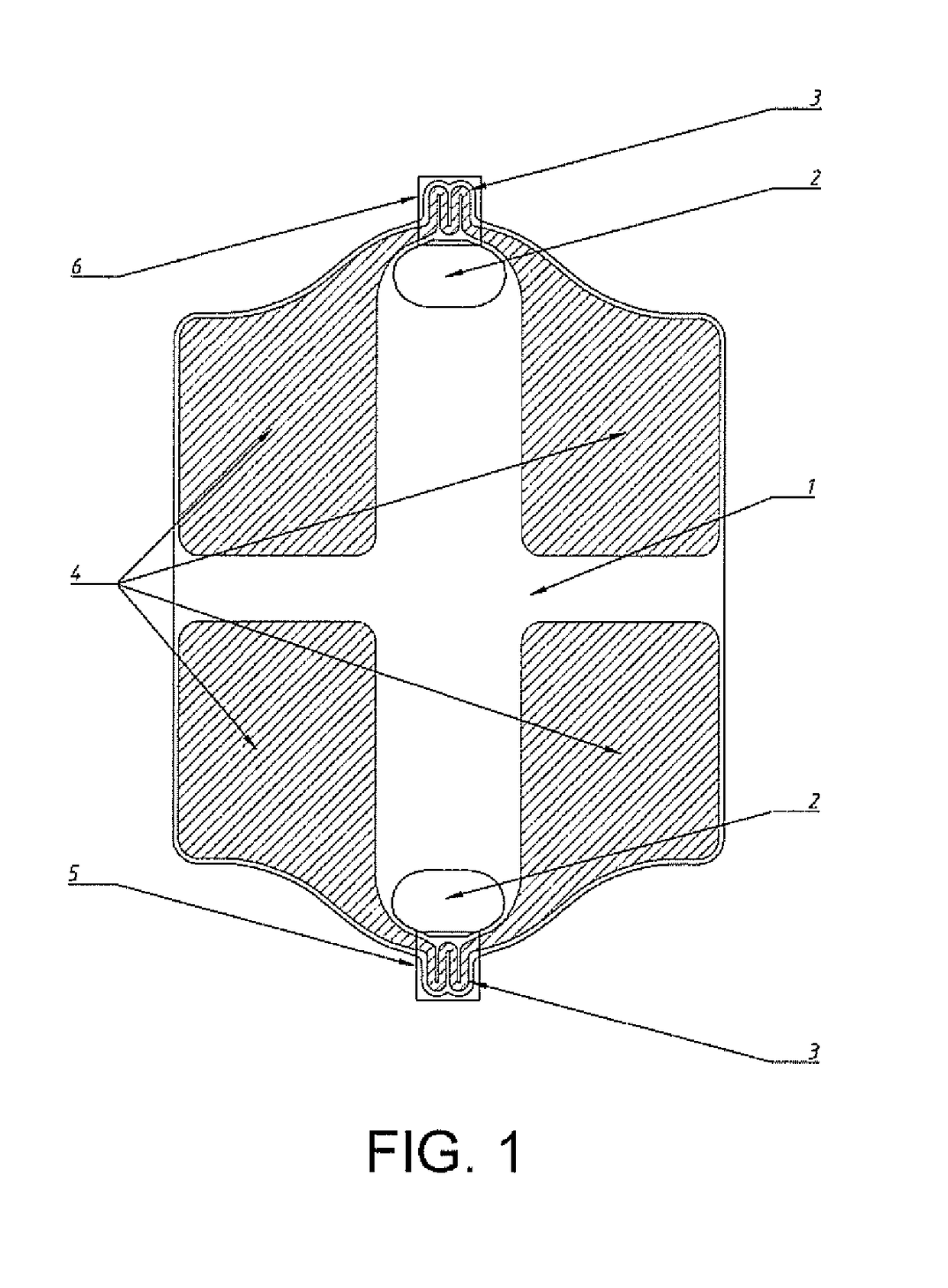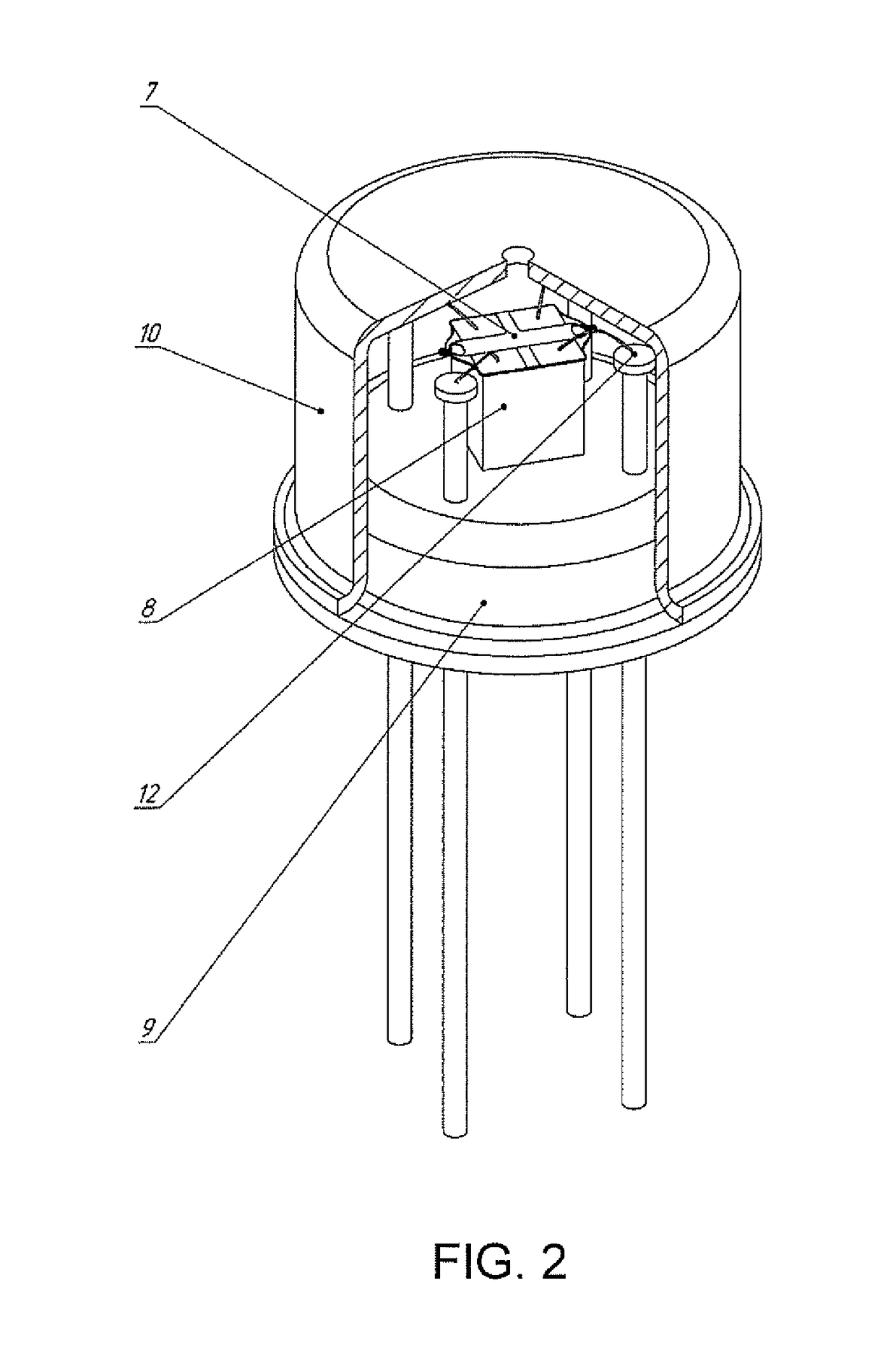Planar Thermocatalytic Sensor of Combustable Gases and Vapours
a thermocatalytic sensor and combustible gas technology, applied in the direction of material thermal analysis, instruments, material heat development, etc., can solve the problems of heavy manual labor costs, inability to guarantee, and progressive drop of sensitivity, so as to improve the parameters of sensitive elements, improve the design, and reduce power consumption
- Summary
- Abstract
- Description
- Claims
- Application Information
AI Technical Summary
Benefits of technology
Problems solved by technology
Method used
Image
Examples
Embodiment Construction
[0052]A main component of the planar thermocatalytic sensor is a microchip produced according to thin-film techniques (FIG. 1), said microchip being composed of a thin porous substrate (1) made of an anodic aluminium oxide film having a thickness of 30 μm, onto which platinum thin-film (300-1000 nm thick) structured coatings (shown as shaded areas in FIG. 1) are applied by vacuum deposition, i.e., two measuring microheaters (3) in the form of a meander, current lead wires to the microheaters, and contact pads (4).
[0053]In turn, main components of the microchip are the two identical measuring microheaters (3) any one of which may function as the measuring microheater of either a working (5) or a reference (6) sensitive elements, depending on which of them has been coated with a catalytically active layer.
[0054]During experiments performed, a high reproducibility of the identical configuration sensitive elements and of resistances of the measuring microheaters produced by a collective...
PUM
| Property | Measurement | Unit |
|---|---|---|
| thickness | aaaaa | aaaaa |
| thickness | aaaaa | aaaaa |
| pore diameter | aaaaa | aaaaa |
Abstract
Description
Claims
Application Information
 Login to View More
Login to View More - R&D
- Intellectual Property
- Life Sciences
- Materials
- Tech Scout
- Unparalleled Data Quality
- Higher Quality Content
- 60% Fewer Hallucinations
Browse by: Latest US Patents, China's latest patents, Technical Efficacy Thesaurus, Application Domain, Technology Topic, Popular Technical Reports.
© 2025 PatSnap. All rights reserved.Legal|Privacy policy|Modern Slavery Act Transparency Statement|Sitemap|About US| Contact US: help@patsnap.com



